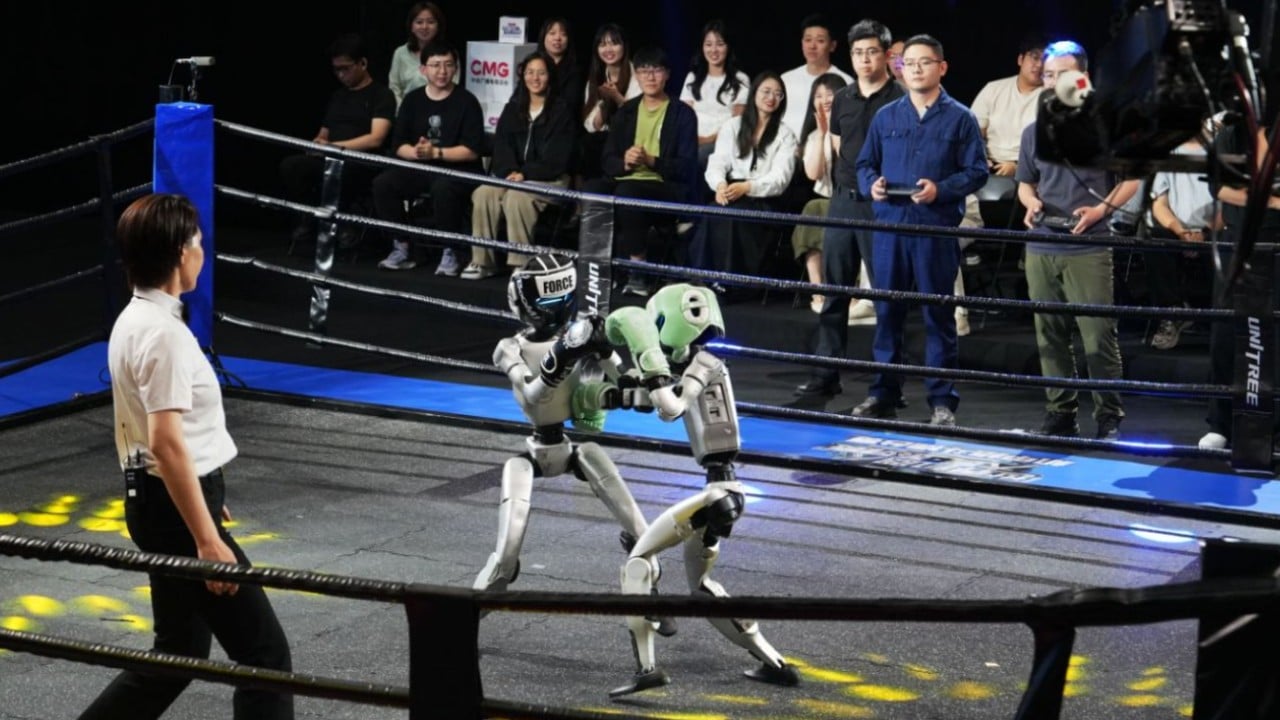They dance, they run, they punch – but they never break a sweat or flinch in pain.
Advertisement
China’s humanoid robots are increasingly entering human arenas, participating in real-world sports competitions that expose them to unpredictable, complex environments – and, as analysts note, generate valuable data to advance their development.
On Sunday, the world’s first kickboxing contest featuring humanoid robots kicked off in the eastern city of Hangzhou. Four Unitree G1 robots – donning helmets and boxing gloves to resemble human fighters – unleashed a volley of blows with speed and precision, skilfully executing moves like roundhouse kicks and elbow strikes.
The contest came a month after humanoid robots participated in a marathon in Beijing, where robots could be seen running with the form of a human athlete, swinging their arms rhythmically and maintaining a quick, short-stride cadence.
“While China maintains a strong lead in hardware and supply chains, start-ups have started dedicating efforts to develop the ‘brains’ of humanoid robots,” said Goldman Sachs analysts led by Jacqueline Du in a research note on Thursday, adding that real-world data was “increasingly important to achieve consistency with physical-world and task accuracy”.
Advertisement
Amid the intensifying tech rivalry between China and the United States, on the humanoid-robot front, companies on both sides are racing to boost investor confidence, seeking to convince the market that the technology is advancing faster than expected and that commercialisation is on the horizon.

